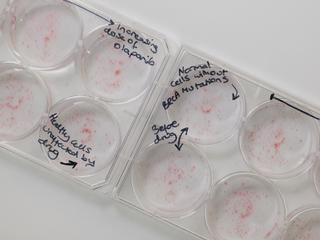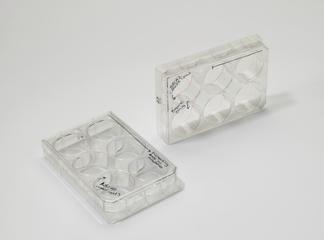
Tent used by Dr Griffith Pugh on 1953 Mount Everest expedition
- Made:
- 1952-3 in unknown place
Logan tent made of cotton and nylon fabric with lightweight nylon inner lining, used by Dr Griffith Pugh to carry out physiological studies for and during the Mount Everest expedition of 1953, United Kingdom, 1952-3.
What does it take to climb Everest, the world’s tallest mountain? The 1953 attempt was informed by and involved an unprecedented amount of scientific research. Preparations for the 1953 expedition began in 1952 with a reconnaissance and research trip to Mount Cho Oyu, about 20km west of Everest and the world’s sixth highest mountain. During both the 1952 and 1953 trips, physiologist Dr Griffith Pugh carried out ground-breaking research into what it takes to push the human body to the limits of its endurance. Pugh climbed with the climbing teams to several of the high-altitude camps because he believed that it was not possible to replicate that environment in a laboratory. This tent was specially designed to give shelter and allow for head room to carry out gas analysis, and it was a different shape to the rest of the tents on the Everest expedition. This tent was in continuous use at Camp 4 at 21,500ft (6553m).
By the 1950s, there had been several attempts to summit Everest and some climbers had got very close, but none had made it. The pioneering research of Dr Griffith Pugh was a key factor in the success of Edmund Hillary and Tenzing Norgay’s climb in 1953. Pugh’s background made him uniquely suited to this work. He was a practising doctor, but also a world class skier. He was selected to represent Great Britain in skiing at the 1936 Winter Olympics, but he was unable to attend due to injury. He also trained soldiers at the School of Mountain Warfare in Lebanon during the Second World War. It was here that Pugh began to research the impact of high altitude and extreme conditions on the body, leading to his work on Everest. Pugh took part in the expedition to Everest in 1953 and the preparatory expedition in the Himalayas in 1952, believing that laboratory research could not accurately recreate the experience of being in these extreme environments. His work established principles about acclimatising to altitude, food and water consumption during climbs, and oxygen usage that continued to be used by climbers for decades.
Details
- Category:
- Laboratory Medicine
- Object Number:
- 2017-60
- Materials:
- textile, plastic (unidentified) and metal (unknown)
- Measurements:
-
overall (bag): 950 mm x 547 mm
overall (white part - partially unfolded): 1002 mm x 1007 mm
overall (green and beige inner tent - unfolded): 2300 mm x 1870 mm
- type:
- tent
- credit:
- Simon Pugh




